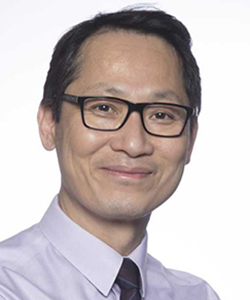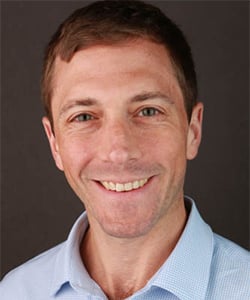Interview with a Leader in the Field: Ban Tsui – 2022 Distinguished Service Award Recipient
Cite as: Machi A. Interview with a leader in the field: Ban Tsui – 2022 Distinguished Service Award recipient. ASRA Pain Medicine News 2022;47. https://doi.org/10.52211/asra080122.030
 Chi-Ho Ban Tsui Dip Eng, BSc, BPharm, MSc(Pharm), MD, FRCP(C), PG Dip Echo, received the Distinguished Service Award on April 2, 2022, in conjunction with the 47th Annual Regional Anesthesiology and Acute Pain Medicine Meeting in Las Vegas, NV. Dr. Tsui is a professor, director of Stanford University Pediatric Regional Anesthesia, director of research in the division of adult regional anesthesia, and an adult and pediatric anesthesiologist in the department of Anesthesiology, Perioperative and Pain Medicine at Stanford University in Stanford, CA.
Chi-Ho Ban Tsui Dip Eng, BSc, BPharm, MSc(Pharm), MD, FRCP(C), PG Dip Echo, received the Distinguished Service Award on April 2, 2022, in conjunction with the 47th Annual Regional Anesthesiology and Acute Pain Medicine Meeting in Las Vegas, NV. Dr. Tsui is a professor, director of Stanford University Pediatric Regional Anesthesia, director of research in the division of adult regional anesthesia, and an adult and pediatric anesthesiologist in the department of Anesthesiology, Perioperative and Pain Medicine at Stanford University in Stanford, CA.
ASRA Pain Medicine News Special Projects Associate Editor Anthony Machi, MD, sat down with Dr. Tsui recently to discuss his career trajectory, reminisce, and drop some equally impressive names.
Anthony Machi: You are recognized as an exceptional, leading innovator, and researcher within the field of regional anesthesia. Can you outline your journey? What personal qualities or characteristics have been most important along the way? How did you decide to focus on regional anesthesia and acute pain?
Chi-Ho Ban Tsui: My interests and work have always been heavily influenced by academic and translational research. In 1999, at the beginning of my anesthesia residency, I was invited to present a formal lecture at the annual conference of ASRA Pain Medicine on my novel research on a new epidural confirmation approach leveraging electrical physiologic response. Prior to my discovery, there was no objective and dependable way for directing and validating epidural catheter position other than the loss of resistance technique.
I recall the first time I administered an epidural when I was a resident. After performing the epidural, I asked my staff how I could verify that the catheter was placed in the right location. My staff informed me, "You can inject local anesthetic through your epidural catheter and observe the sensory changes while you wait. However, we do not have the time to do so at this time since we must begin the case. If the patient awakens screaming, then you know your epidural was placed incorrectly." Since then, I've thought that we ought to be able to do better than this.
During my neuro rotation, I observed a neurosurgeon inserting epidural stimulation electrodes to treat chronic pain, which offered me a different viewpoint. The idea that it is safe to use and apply electricity to the epidural area provides me with a fresh research path for validating my epidural placement. My hypothesis, which turned out to be right, was that it ought to be possible to elicit motor responses (muscle contractions) when electrical stimulation is supplied through the epidural catheter. This would imply that the catheter is positioned appropriately in the epidural space. The level of the spinal column at which the catheter was positioned should also correspond to the level of the contracting muscles.
Looking back on my career, I believe the most crucial personal quality was having a passion and an attitude of wanting to "do better." Early on in my residency, I realized that regional anesthesia is not simple and is comparable to an "art" that not everyone can master. My mentor, Dr. Brendan Finucane (former ASRA [Pain Medicine] president), encouraged me to pursue regional anesthesia since there were numerous opportunities to leverage technology to provide clinicians with better tools that might potentially enhance patient outcomes and satisfaction.
AM: You have a very interesting formal educational background including degrees in engineering, pharmacy, and mathematics. How have your educational experiences helped your creative endeavors within regional anesthesia?
BT: I believe the famous remark from Steve Jobs, “you can't connect the dots looking forward; you can only connect them looking backward" aptly summarizes my answers. The study in pharmacy has provided me with a good foundation for knowing medication delivery modalities and how the drug functions in anesthesia. My experience in engineering and mathematics is incredibly helpful in my development of how to effectively apply electricity through the epidural catheter for performing the electrical epidural test.
Engineering enables me to be inventive in overcoming many other clinical challenges such as the typical regional leaking problem with a standard catheter using a catheter-through-needle technique. By utilizing a catheter over a needle to make the puncture hole smaller, this peripheral catheter's leaking problem is resolved. I felt that my premedical school training would help me connect my future "dots" and realize my dream of transforming regional anesthesia from an "art" to a trustworthy "science."
AM: What drives your professional curiosity?
BT: When I was having a challenging day clinically, my curiosity would start to kick in because I wanted to perform better the next time.
AM: Who or what inspires you to innovate? What are the important qualities for a mentor?
BT: My patient is the source of my greatest inspiration. On the one hand, when my patient's block works properly, it gives me great encouragement and joy. However, when a block or technique does not go as expected, I am motivated to innovate and come up with something new.
Drs. Brendan Finucane and Richard Rosenquist (former ASRA [Pain Medicine] presidents). are two of the most influential people in my career. They both possess all the characteristics of a great mentor, including a high level of trust and an abundance of support for their mentees.
AM: How do you define success?
BT: I consider success as the ability to make the world a better place than I had found it.
AM: Which of your innovations or studies do you think has been most impactful to date on the field of regional anesthesia and why? Which do you think has the most potential for future impact and why?
BT: For the last two decades, many colleagues and I have worked hard to promote the use of ultrasound in regional anesthesia, and, now, expanding its use to point-of-care ultrasound (POCUS), I believe that those efforts have had an impact on the field to date. The ultrasound genuinely transformed regional anesthesia from an “art” to a “science” that every qualified doctor may perform confidently.
Even though it is not routinely carried out in clinical settings, I still consider one of my other important contributions to be my earlier study that was published under the title "Confirmation of Epidural Catheter Placement Using Nerve Stimulation." This paper was written while I was working as a resident. As part of the journal's Diamond Jubilee Celebration for Canadian Journal of Anesthesia in the year 2014, this article was selected to highlighted because of its "novelty," "scientific merit," and "overall importance to clinical practice." The invention of the electrical epidural stimulation test made it easier to guide the caudal epidural anesthesia to offer sufficient pain management in newborns. I hypothesized that the electrical stimulation test could still play a continuous role in epidural care given that the current generation of ultrasonography machines still have limitations on their ability to penetrate the skeletal bone in adults.
AM: How do you structure your clinical and nonclinical time?
BT: To me, clinical time is also my academic time, because I learn so much and gain so many new ideas from delivering clinical care to my patients.
AM: Can you describe one or more of the most difficult professional challenges you have had in your career? How did you overcome them?
BT: Innovating and creating new knowledge is something that I'm passionate about. Even though I understand how difficult it can be to change the hearts and minds of others, I occasionally get impatient and frustrated with the slow progress. The epidural stimulation test, for example, has been described by me for more than 20 years, but many of my colleagues have never heard of it. To overcome this, I remind myself that in addition to taking more time to share and disseminate the concept, I also need to work on simplifying and increasing the adaptability of the test further.
AM: Where do you see the most potential for future innovation in regional anesthesia? Which problems are most pressing to address?
BT: With the opioid crisis, regional anesthesia has the most promise for future innovation by employing both pharmacological agents and electrical neuromodulation in the management of acute pain. The hybrid concept of the combination of conduction local anesthetic blocking and electrical neuromodulation of unblocked fibers using gate-control theory may provide patients with the "best of both worlds" to enhance their recovery by smoothing the transition of acute postoperative pain and avoiding the development of chronic postoperative pain. In fact, multimodal analgesia is based on the principle that different analgesic treatments target different pain pathways or mechanisms of pain causation. Similarly, each modality complements the other, the idea of using local anesthetic conduction blocking and electrical neuromodulation together is consistent with the multimodal analgesia concept.
AM: Do you have advice to offer current trainees or professionals who seek to innovate in regional anesthesia?
BT: Use your anatomical knowledge and the lessons you've previously learned to your advantage. Don't give up hope. To quote Steve Jobs: "So you have to trust the dots will somehow connect in your future”.
AM: How has involvement in ASRA Pain Medicine contributed to your success? How has your relationship with ASRA Pain Medicine evolved over time?
BT: When I was a resident, I gave my first lecture on "Confirmation of Epidural Catheter Placement Using Nerve Stimulation" at the ASRA [Pain Medicine] annual meeting. Since then, I've participated in a variety of ASRA Pain Medicine committees and workshops on an annual basis throughout the last 25 years. It's also imperative to note that the teaching experiences at ASRA Pain Medicine not only allowed me to interact with professionals from around the world but also allowed me to learn a great deal and created numerous research ideas. More importantly, the ASRA Pain Medicine experience has made me feel like a member of the ASRA Pain Medicine family.
AM: How much of your success would you attribute to hard work and how much would you attribute to luck or other circumstances?
BT: There is no doubt that persistent hard effort will lead to success; yet, passion and curiosity are what make persistent hard work possible.
AM: What do you love about your job?
BT: Clinical work is one of my favorite things to do! With my involvement and care, I can help my patient get through the stressful time leading up to and immediately following surgery. Even more thrilling is the fact that through my academic work and research, I can make a contribution to the medical care of patients I have never met.

Leave a commentOrder by
Newest on top Oldest on top